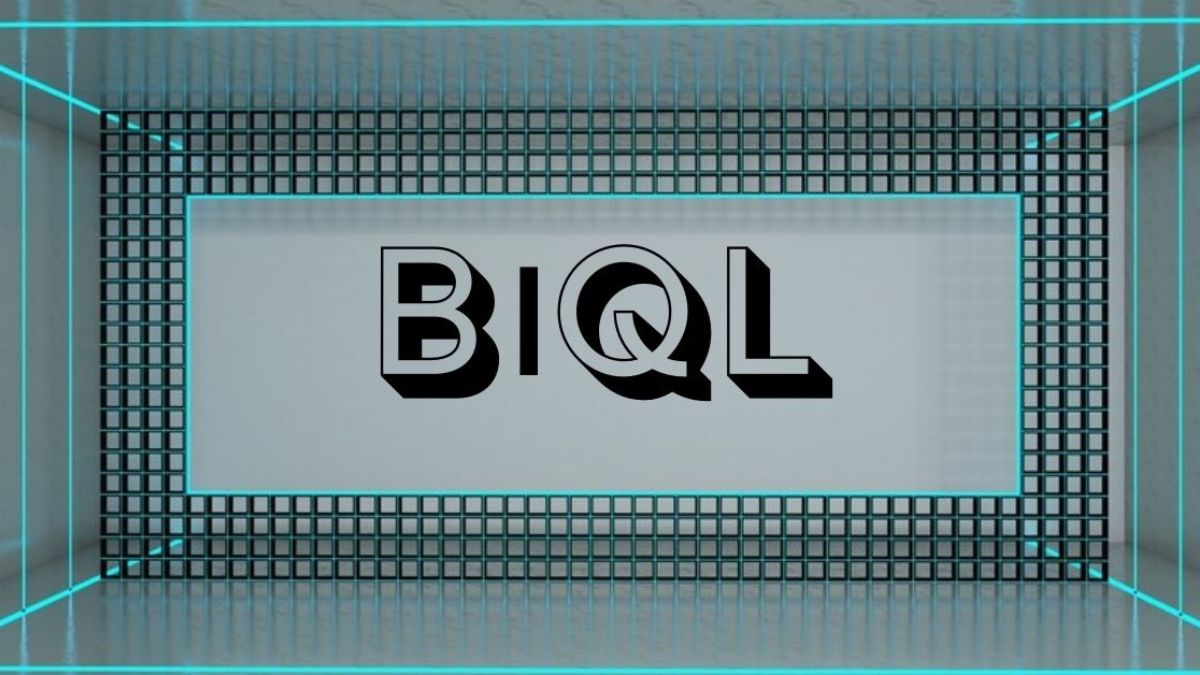Technology
Bıql: A Revolutionary Approach to Data Querying

In the fast-paced world of technology, innovation is the key to staying ahead. One of the most groundbreaking developments in recent times is Bıql, a novel data querying language that is reshaping the way we interact with databases. This article delves into the core aspects of Bıql, exploring its features, advantages, and potential impact on the industry.
What is Bıql?
Bıql, short for “Binary Query Language,” is a cutting-edge language designed to optimize and simplify the process of querying databases. Unlike traditional query languages such as SQL, Bıql focuses on binary data representation, which allows for more efficient data manipulation and retrieval. This innovative approach addresses many of the limitations and inefficiencies found in conventional querying methods.
Key Features of Bıql
Binary Data Representation
At the heart of Bıql is its unique binary data representation. By operating directly on binary data, Bıql reduces the overhead associated with data type conversions, resulting in faster query execution times. This feature is particularly beneficial for large-scale databases where performance is a critical factor.
Optimized Query Execution
Bıql leverages advanced algorithms to optimize query execution. Its architecture is designed to minimize resource consumption, making it an ideal choice for environments with limited computational power. The language’s built-in optimization techniques ensure that queries are executed in the most efficient manner possible.
Intuitive Syntax
Despite its complexity, Bıql boasts an intuitive and user-friendly syntax. This makes it accessible to both novice and experienced database administrators. The language’s design emphasizes readability and ease of use, allowing users to write and understand queries with minimal effort.
Scalability
One of Bıql’s standout features is its scalability. The language is capable of handling databases of all sizes, from small datasets to massive data warehouses. This scalability ensures that Bıql can adapt to the growing needs of any organization, making it a future-proof solution for data querying.
Advantages of Bıql
Enhanced Performance
The binary-centric approach of Bıql leads to significant performance improvements. By eliminating the need for data type conversions and optimizing query execution, Bıql delivers faster response times and higher throughput. This performance boost is crucial for applications that demand real-time data processing.
Reduced Resource Consumption
Bıql’s efficient use of computational resources translates to lower operational costs. Organizations can achieve the same level of performance with fewer hardware requirements, resulting in cost savings and a reduced environmental footprint. This efficiency also makes Bıql suitable for deployment on resource-constrained devices.
Versatility
The versatility of Bıql allows it to be used across various industries and applications. Whether it’s financial data analysis, scientific research, or e-commerce, Bıql’s robust querying capabilities make it a valuable tool for extracting insights from data. Its adaptability ensures that it can meet the diverse needs of different sectors.
Future-Proofing
As the volume of data continues to grow exponentially, the need for efficient querying solutions becomes more pressing. Bıql’s forward-thinking design positions it as a future-proof language that can handle the increasing demands of data processing. Its scalability and performance enhancements ensure that it remains relevant in the face of evolving technological landscapes.
Potential Impact on the Industry
The introduction of Bıql has the potential to revolutionize the database management industry. By addressing the shortcomings of traditional query languages, Bıql offers a more efficient and effective solution for data querying. Its impact can be seen in various areas:
Big Data Analytics
In the realm of big data analytics, Bıql’s performance advantages are particularly significant. The ability to quickly process and analyze large datasets enables organizations to gain insights faster, leading to better decision-making and competitive advantages.
Internet of Things (IoT)
The proliferation of IoT devices generates vast amounts of data that need to be processed in real-time. Bıql’s optimized query execution and reduced resource consumption make it an ideal choice for IoT applications, where efficiency and speed are paramount.
Cloud Computing
In cloud computing environments, resource efficiency is crucial for cost management. Bıql’s ability to deliver high performance with minimal resources aligns perfectly with the needs of cloud service providers and their customers, driving more cost-effective and scalable solutions.
Artificial Intelligence and Machine Learning
AI and machine learning models require large volumes of data for training and inference. Bıql’s efficient querying capabilities can streamline the data preparation process, accelerating the development and deployment of AI solutions.
Conclusion
Bıql represents a significant leap forward in the field of data querying. Its innovative approach to binary data representation, optimized query execution, and intuitive syntax make it a powerful tool for modern data management. As organizations continue to grapple with ever-increasing volumes of data, Bıql offers a promising solution that combines performance, efficiency, and scalability. With its potential to transform various industries, Bıql is poised to become a cornerstone of future data querying and processing frameworks.
Technology
wavr-297: Revolutionizing Technology

As time goes on, new technological developments expand the limits of what was previously considered feasible. Wavr-297 stands out among these breakthroughs as one that is really fascinating. To appreciate Wavr-297’s potential influence across multiple areas, it is vital to understand its relevance.
What is wavr-297?
Wavr-297 is a state-of-the-art technological marvel, marking a watershed moment in the convergence of VR and AR. By fusing the digital and physical realms, it provides users with an unprecedented level of immersion.
History and Background
Wavr-297 was born because of the merging of virtual reality and augmented reality. It has evolved into the groundbreaking platform it is today because of years of dedicated research and development.
Features of wavr-297
Fundamentally, Wavr297 has a plethora of functions made to enthrall and involve users. Redefining the bounds of reality, it features interactive worlds and breathtaking visual displays.
How does wavr-297 work?
By superimposing digital material over the user’s actual surroundings, Wavr297 makes it difficult to tell the difference between reality and the virtual world. Its cutting-edge algorithms make sure everything works together smoothly, giving you an immersive experience.
Applications of wavr-297
Among the many fields that can benefit from Wavr297’s adaptability are the gaming, educational, healthcare, and business spheres. Its uses are practically endless, ranging from improving training simulations to transforming the entertainment industry.
Advantages of wavr-297
More so than with older VR or AR devices, it provides a natural and intuitive experience.
Challenges and Limitations
There are certain difficulties with the Wavr297, despite its impressive capabilities. Problems with hardware compatibility and high costs might prevent broad use in several industries.
Future prospects
Wavr297 seems to have a bright future ahead of it. We may anticipate that technological advancement will be driven by more inventions and refinements.
Comparison with Similar Technologies
The innovative capabilities and superior user experience of the Wavr297 make it stand out from competing virtual reality and augmented reality systems.
User Experience with wavr-297
Users have been quite complimentary, with many applauding the game’s realistic graphics and immersive experience. Wavr297 has received a lot of praise from both gamers and pros.
Industry Adoption
Recognizing Wavr297’s revolutionary potential, several sectors have started to adopt it. It is having an effect in many fields, from architectural visualization to training simulations.
Regulatory Considerations
Wavr297, like any new technology, brings up serious moral and legal questions. The future of it will be greatly influenced by regulations about privacy and content management.
Cost and Accessibility
Despite Wavr-297’s exceptional experiences, its accessibility and affordability are major factors preventing its broad adoption. In order to make this revolutionary technology accessible to more people, it is crucial to work towards lowering entrance barriers.
Conclusion
Virtual and augmented reality have undergone a sea change with Wavr297. It is poised to lead the way in creating the future of immersive technology thanks to its novel features and prospective uses.
FAQs
Is wavr-297 compatible with existing VR and AR hardware?
The smooth operation of your virtual reality and augmented reality headsets will be guaranteed by Wavr-297’s compatibility with a broad variety of devices.
Can wavr-297 be used for educational purposes?
Virtual field tours and interactive learning experiences are only two of the many educational uses for Wavr297.
How does wavr-297 differ from traditional VR and AR systems?
The enhanced features and unsurpassed realism of the Wavr297 make it stand out and provide consumers with a more realistic experience.
What industries are currently adopting wavr-297?
Many sectors are using Wavr297, including the gaming, healthcare, educational, and business sectors.
Technology
How Blockchain is Revolutionizing Data Security and Online Transactions

With the rise of cyber threats, data breaches, and fraudulent online transactions, businesses and individuals are increasingly seeking secure ways to protect their sensitive information. Blockchain technology has emerged as a game-changing innovation that enhances data security and revolutionizes online transactions. By providing decentralization, transparency, and cryptographic security, blockchain has the potential to transform multiple industries, from banking and finance to healthcare and e-commerce.
In this comprehensive blog, we will explore how blockchain technology is reshaping data security and online transactions, its benefits, challenges, and real-world applications. Additionally, we will discuss the future of blockchain and answer key FAQs.
Understanding Blockchain Technology
What is Blockchain?
Blockchain is a decentralized, distributed ledger technology that records transactions in a secure and transparent manner. Unlike traditional databases managed by a single entity, blockchain operates on a peer-to-peer network, making it resistant to fraud and hacking.
How Does Blockchain Work?
A blockchain consists of blocks of data linked together in a chain. Each block contains:
- A list of transactions
- A timestamp
- A cryptographic hash of the previous block
This structure ensures immutability, meaning once data is recorded, it cannot be altered or deleted. The consensus mechanism (Proof of Work, Proof of Stake, etc.) validates each transaction, preventing unauthorized changes.
Key Features of Blockchain
- Decentralization – No central authority controls the blockchain.
- Transparency – All transactions are recorded on a public ledger.
- Security – Data is protected using cryptographic techniques.
- Immutability – Once recorded, data cannot be changed.
- Smart Contracts – Automated contracts execute transactions when conditions are met.
How Blockchain Enhances Data Security
1. Data Encryption and Cryptographic Security
Blockchain employs advanced encryption and hashing algorithms (such as SHA-256) to secure data. This makes it nearly impossible for hackers to tamper with or alter stored information.
2. Decentralization Reduces Single Points of Failure
Traditional databases are centralized, making them vulnerable to cyberattacks and data breaches. In contrast, blockchain operates on multiple nodes across a network, eliminating single points of failure.
3. Immutable and Tamper-Proof Records
Once a transaction is verified and recorded on a blockchain, it cannot be modified. This immutability ensures data integrity and prevents fraudulent activities such as identity theft and financial fraud.
4. User Anonymity and Privacy Protection
Blockchain enables users to make transactions without exposing personal information. While transactions are transparent, user identities remain encrypted and anonymous.
5. Secure Access Control and Authentication
Blockchain-based identity management systems provide multi-factor authentication and biometric security, reducing the risk of unauthorized access and identity fraud.
How Blockchain is Revolutionizing Online Transactions
1. Faster and Cost-Effective Payments
Blockchain eliminates intermediaries, such as banks and payment processors, making transactions faster and cheaper. Cross-border payments, which traditionally take days, can be completed in minutes using blockchain.
2. Smart Contracts for Automated Transactions
Smart contracts are self-executing contracts stored on the blockchain. These contracts automatically process transactions when predefined conditions are met, reducing the need for manual verification and middlemen.
3. Fraud Prevention in Digital Transactions
With blockchain, transactions are securely recorded, preventing double-spending, chargeback fraud, and identity theft.
4. Secure E-commerce and Online Marketplaces
Blockchain-powered e-commerce platforms provide transparent, tamper-proof records, reducing counterfeit goods, fake reviews, and fraudulent activities.
5. Decentralized Finance (DeFi) and Cryptocurrency
The rise of cryptocurrencies like Bitcoin and Ethereum has led to a new financial ecosystem called DeFi (Decentralized Finance). DeFi eliminates traditional banks, allowing peer-to-peer lending, borrowing, and investing through blockchain.
Real-World Applications of Blockchain in Data Security and Transactions
1. Banking and Finance
- Secure digital payments (Bitcoin, Ethereum, Ripple)
- Fraud detection and risk management
- Cross-border transactions without high fees
2. Healthcare
- Secure patient records and medical history
- Protection against data breaches
- Blockchain-based drug tracking and supply chain management
3. Supply Chain Management
- Transparency and traceability in supply chains
- Preventing counterfeit goods
- Reducing fraud in logistics
4. Identity Verification and Management
- Digital IDs on blockchain
- Preventing identity theft and cyber fraud
- Secure voting systems in elections
5. E-commerce and Retail
- Fraud-free online shopping
- Transparent and verifiable product origins
- Secure customer transactions
Challenges and Limitations of Blockchain
1. Scalability Issues
As blockchain networks grow, transaction speed and scalability become concerns. Solutions like Layer 2 scaling (Lightning Network, Ethereum 2.0) are being developed to address this issue.
2. Energy Consumption
Some consensus mechanisms, like Proof of Work (PoW), require massive computational power, leading to high energy consumption.
3. Regulatory and Legal Concerns
Governments are still working on regulations for blockchain and cryptocurrencies, leading to uncertainty in adoption.
4. Adoption Challenges
Many industries are hesitant to adopt blockchain due to technical complexities and lack of understanding.
The Future of Blockchain in Data Security and Transactions
Blockchain is set to become a mainstream technology in securing online transactions and sensitive data. Future trends include:
- Mass adoption of DeFi platforms
- Integration of AI and blockchain for enhanced security
- Green blockchain solutions with lower energy consumption
- Increased regulatory clarity for global blockchain adoption
- Growth in NFT and tokenization of digital assets
FAQs
1. How does blockchain enhance data security?
Blockchain uses encryption, decentralization, and immutability to ensure data integrity and protection against cyber threats.
2. Can blockchain prevent online fraud?
Yes, blockchain’s transparent and tamper-proof records make it difficult for fraudsters to alter or fake transactions.
3. Are blockchain transactions completely anonymous?
While blockchain transactions are transparent, user identities remain encrypted and pseudonymous.
4. What industries benefit most from blockchain security?
Banking, healthcare, supply chain, e-commerce, and identity verification industries benefit significantly from blockchain.
5. Is blockchain expensive to implement?
Initial implementation can be costly, but over time, blockchain reduces operational costs by eliminating intermediaries and automating processes.
6. Can blockchain be hacked?
While blockchain is highly secure, certain vulnerabilities, such as 51% attacks and smart contract bugs, need to be addressed.
Conclusion
Blockchain technology is redefining data security and online transactions, offering a decentralized, secure, and efficient alternative to traditional systems. As businesses and industries continue to adopt blockchain, the world moves toward a more transparent, fraud-resistant, and secure digital future.
While challenges remain, ongoing advancements and regulatory frameworks will further solidify blockchain as a revolutionary force in data security and finance. If you’re looking for a secure, efficient, and future-proof solution for digital transactions, blockchain is undoubtedly the way forward!
Technology
DTF Printing Process Analysis: A Complete Guide from Design to Finished Product

Direct-to-Film (DTF) printing has revolutionized textile and garment decoration. It offers unmatched versatility and exceptional print quality. DTF technology lets businesses make detailed, vibrant, and durable designs on various materials. It works on custom T-shirts, hats, bags, and other accessories. This guide analyzes the DTF printing process in detail. It covers everything from the design stage to the final product. You will understand each step for a successful print job.
For the best results, use high-quality materials. Use the best DTF transfer film and reliable equipment. This guide will discuss the importance of these components. They are key to the success of your DTF printing efforts.
Understanding the DTF printing process:
DTF printing is a digital transfer method. It prints designs on a special film using DTF-compatible inks. The process involves using heat and pressure to transfer the design from the film to the fabric. It is a vibrant, durable design. It adheres to various fabrics, including cotton, polyester, and blends.
Key Advantages of DTF Printing:
- Works on a wide range of materials.
- Produces vibrant colors and fine details.
- Offers excellent durability and wash resistance
- Eliminates the need for costly screen setups.
Step-by-Step DTF Printing Process:
Step 1: Creating the Design:
The process begins with designing the artwork. Use graphic design software like Adobe Illustrator or Photoshop to create high-resolution designs. Ensure the following:
- The design resolution is 300 DPI or higher.
- ICC profiles optimize colors for the best color accuracy.
- The design has a transparent background for clean transfers.
Step 2: Printing the design on DTF film:
Use a DTF printer to print the design onto the best DTF transfer film. This film has a special coating. It holds the ink and transfers it to the fabric very well.
- Printer Setup: Load the film into the printer. You must position it for single-sided printing.
- Printing Process: The printer first applies colored ink to the film. Then, it adds a layer of white ink for opacity.
- Film Selection: Choose high-quality films, like cold or hot peel types, based on your needs. Cold peel films are best for precision. Hot peel films process faster.
Step 3: Applying Hot Melt Powder:
After printing, apply a fine layer of hot melt adhesive powder to the wet ink. This powder acts as a bonding agent during the heat transfer process.
- Application Tips: Spread the powder in a uniform manner to avoid uneven bonding.
- Curing Process: Use a curing oven or heat press to melt the powder and solidify the design.
- Step 4: Transferring the design onto fabric:
Place the DTF film on the fabric, with the printed side facing down. Use a heat press to transfer the design.
Heat Press Settings:
- Temperature: 160-180 °C (320-356 °F)
- Pressure: Medium to high.
- Time: 15-20 seconds.
Peeling the film:
Depending on the film type, peel it off either immediately (hot peel) or once it cools down (cold peel).
Step 5: Post-Pressing:
For durability, press the design with a protective sheet for 5 to 10 seconds. This step ensures better adhesion and a smoother finish.
Components of the DTF printing process:
DTF Transfer Film:
The DTF transfer film is a critical component of the process. It acts as the carrier for the design and ensures a clean transfer to the fabric. LINKO’s high-quality films provide better print clarity and durability. They are also easier to use.
Types of DTF films:
- Cold Peel Film: Requires cooling before peeling, offering better precision.
- You can peel Hot Peel Film right after pressing. It’s ideal for fast production.
- You can peel the Instant Peel Film at any time, but it requires careful handling.
DTF Ink:
Designers create DTF-specific inks for vibrant color reproduction and durability. They form a deep bond with the film and fabric. They provide lasting results.
Hot Melt Powder:
This adhesive powder ensures the design adheres to the fabric. The powder’s quality affects the print’s durability and wash resistance.
Choosing the Right Materials and Equipment:
Best DTF Transfer Film:
Investing in the best DTF transfer film is crucial for high-quality prints. LINKO’s films have a smooth surface, high ink absorption, and great transfer performance.
DTF Printers:
Choose printers that offer precision and efficiency. Popular options include Epson-based DTF printers with many printheads for faster production.
Software and Color Management:
Use advanced RIP software to manage color accuracy and ink distribution. Experts recommend software like Print Factory. The interface is easy to use, and the features are robust.
Common Issues and Troubleshooting:
Despite its advantages, DTF printing can face challenges.
Here’s how to address some common problems:
Poor adhesion: Ensure even powder application and proper heat press settings.
Color Mismatch: Use correct ICC profiles and high-quality inks.
Film Sticking to Fabric: Adjust heat and pressure settings to prevent over-pressing.
Applications of DTF printing:
You can use DTF printing for a wide range of products, including:
- Custom apparel (T-shirts, hoodies, jackets).
- Accessories (hats, bags, shoes).
- Promotional items (banners, flags).
- Its ability to work on various materials makes it a top choice for businesses that want to diversify.
Maintenance and Storage Tips:
- Storage Conditions: Keep DTF films in a cool, dry place to prevent moisture damage.
- Printer maintenance: clean daily print heads and use high-quality ink to avoid clogging.
- Film handling: Avoid scratching or creasing the film for consistent results.
Why choose LINKO for DTF printing supplies?
LINKO is a trusted name in DTF printing. We offer printers, inks, powders, and the best DTF transfer film. With years of experience, www.dtflinko.com helps businesses in the printing market. It is very competitive. We provide innovative solutions and exceptional customer support.
Conclusion:
DTF printing is a game changer in textiles. It offers unmatched flexibility and quality. Using the best DTF transfer film and knowing the process can yield stunning results. This will help grow your business.
This guide will help you, whether you’re a pro or a beginner. It will make your DTF printing efficient, reliable, and profitable.


















